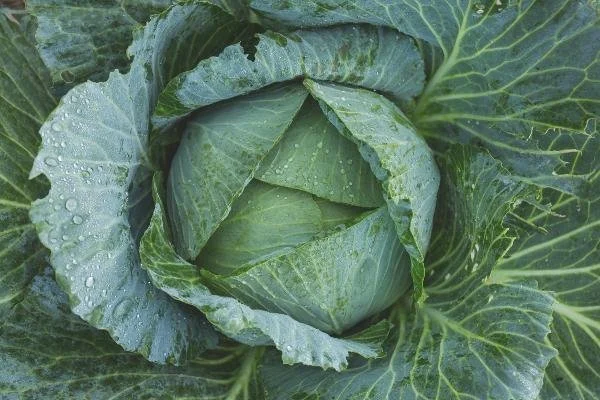If you have ever experimented with the infamous cabbage soup diet, you may never want to look at another cabbage again. However, cabbage is often underrated for its culinary versatility. As an inexpensive vegetable that's packed with nutrients, cabbage is a great compliment to a healthy lifestyle.
Cabbage Nutrition Facts
The following nutrition information is provided by the USDA for 1 cup (89g) of raw chopped cabbage.
Calories: 22
Fat: 0.1g
Sodium: 16mg
Carbohydrates: 5.2g
Fibre: 2.2g
Sugars: 2.9g
Protein: 1.1g
Carbs
A cup of raw cabbage has just over 5 grams of carbohydrate, with about 50% coming from fibre and 50% from natural sugars. Cabbage has a very low glycemic index of 10.
Fats
Cabbage is basically a fat-free food.
Protein
There's 1 gram of protein in a cup of raw cabbage. Cabbage is not a significant protein source.
Vitamins and Minerals
Cabbage is a good source of potassium, folate, and vitamin K. Cabbage also provides some calcium, iron, vitamin A, and vitamin C.
Health Benefits
Cabbage is a nutritious vegetable that can boost your body's natural defences against disease. Here are some areas where cabbage is especially helpful.
Promotes Cardiovascular Health
Cabbage is a good source of fibre and potassium, two key nutrients for heart health. While fibre helps bring down cholesterol levels, potassium lowers blood pressure. Furthermore, cabbage is a good source of the B-vitamin, folate. Higher intakes of folate are linked to lower risk of stroke and heart attack.
Supports Brain Health
Cabbage and other cruciferous vegetables are recommended to help maintain strong cognitive function with age. Memory and alertness levels can be improved with good nutrition. The nutrients in cabbage help optimise blood flow to the brain. Cabbage is beneficial for people of all ages who want to stay sharp.
May Lower Cancer Risk
Cabbage also contains anti-cancer properties. Studies suggest that getting 3–5 servings of cruciferous veggies per week (such as cabbage, cauliflower, broccoli, Brussels sprouts, kale, and collard greens) protects against several types of cancer. Prostate, lung, breast, and colon cancer risks are reduced, likely due to compounds in cruciferous veggies that activate enzymes in the liver and bind carcinogens.
Protects Vision
The colour of red or purple cabbage is due to a high content of polyphenols, including anthocyanins. These antioxidants work throughout the body to prevent oxidative damage associated with a host of health issues, including blindness caused by age-related macular degeneration. Cabbage is a good source of lutein and zeaxanthin, forms of vitamin A that are known to accumulate in the retina and be especially helpful for warding off vision damage.
Improves Glucose Control
For people with diabetes, cruciferous vegetables like cabbage are an excellent choice. Cabbage is a non-starchy veggie that's low in carbohydrates and high in fibre. The fibre in cabbage keeps blood sugars stable, preventing dangerous highs and lows. Cabbage can be substituted for some of the refined flour in recipes to keep your carb count down. By using cabbage wraps instead of flour tortillas, for instance, you can reduce added carbs while boosting the micronutrient content of your meal.
Allergies
Cabbage allergies are rare but possible. Typical food allergy symptoms include hives, vomiting, dizziness, or tongue swelling. In severe cases, anaphylaxis, a life-threatening reaction, can also occur.
Cabbage may also cross-react with mugwort allergies in a condition called oral allergy syndrome. People with a mugwort allergy can be triggered after eating cabbage. If you suspect an allergy to cabbage or oral allergy syndrome, see an allergist for a full evaluation.
Adverse Effects
Cabbage is high in vitamin K and may interact with the blood thinner, Coumadin (warfarin). If you take blood thinners, your doctor may advise you to maintain a consistent intake of foods that are high in vitamin K to prevent fluctuations in medication effectiveness.
Cabbage is also high in fibre that can be difficult to digest if your body isn't used to it. To minimise digestive discomfort, increase your intake of cabbage gradually and give your body time to adjust.
Varieties
Cabbage comes in several varieties. Some green cabbage varieties include Cheers, Early Jersey Wakefield, and King Cole. Savoury cabbages like Savoury King and Savoury Queen have crinkly leaves and are less common. Red cabbage varieties are growing in popularity such as the Red Meteor and Ruby Ball.
When It's Best
Most cabbage is available year-round in the grocery store or farmer's markets. Look for large cabbage heads that are intact (not split). Cabbages should be tight, heavy for their size, and free of insects and decay.
Storage and Food Safety
Fresh cabbage is hardy and can be stored in the refrigerator for up to 2 weeks (savoury cabbage varieties are best used within 4 days). In conditions under 32 degrees Fahrenheit with 95% relative humidity, cabbage may keep for as long as 5 months. Cabbage can also be pickled or fermented for home preservation.
Wait to wash cabbage until you're ready to use it. Rinse cabbage leaves well under running water before cutting or eating. Remove the core and any decayed outer leaves before preparing cabbage.
How to Prepare
If you're steaming or sauteing cabbage, you might notice an unpleasant smell. This is because of the sulphur compounds in cabbage that are activated during the heating process. To minimise the smell, avoid using aluminium cookware. Try splashing with a bit of acid, like lemon juice, to inhibit the activation.
Preparing red cabbage with stainless steel knives and cookware will prevent colour changes. To keep red cabbage from turning blue or grey, cook with an acidic ingredient like vinegar.
Cabbage may be consumed raw and shredded as in coleslaw, or used in soups and stews. Chop cabbage up and add to stir-fry dishes. You can also steam the leaves and use them as a wrap for meat or other fillings. Ferment cabbage to make your own sauerkraut.

